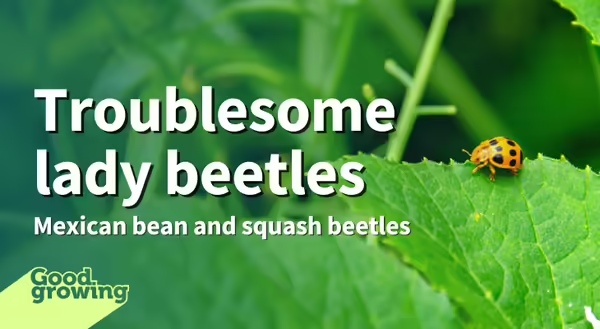
Lady beetles are widely considered a gardener’s friend. Sure, multi-colored Asian lady beetles can be a nuisance when they make their way into our homes during the fall (not to mention displacing native lady beetles). But they are all predatory, beneficial insects that feed on various pest insects such as aphids and mealy bugs, right? Not so fast, two species of lady beetle, the Mexican bean beetle and the squash beetle, feed on plants and are considered pests.
What do they look like?
Mexican bean and squash beetles have the typical round, dome-shaped bodies of lady beetles. Adult squash beetles are yellow or orange, and Mexican bean beetles are more copper colored. The number of spots they have also differs. Squash beetles have seven large black spots on each wing covering and four black spots on their thorax (middle body segment). Mexican Bean Beetles have eight on each wing covering and none on their thorax.
Mexican bean beetles are about the same size as ‘typical’ lady beetles (about ¼” long), while squash beetles are much larger, about twice the size.
The larvae of both species are yellow and are covered in spines. Eggs of both species are yellow and laid in clusters (similar to other lady beetles) on the undersides of leaves. While all life stages of these beetles look similar, the main difference is their food preferences.
Mexican bean beetle
Mexican bean beetles (Epilachna varivestis) are native to higher elevations of western Mexico and Central America and have been found in the United States since the 1860s. While they have been major pests in soybeans in the past, they primarily cause problems in snap (aka bush, string, and green) and lima beans.
Both the adults and larvae will feed primarily on leaves, causing them to have a skeletonized appearance (like Japanese beetles). They will also feed on the leaves, flowers, and bean pods. The way they feed is unique for beetles. They will scrape the surface of a leaf to gather a clump of tissue. They will then squeeze the tissue with their mandibles to remove the liquid, which they will drink, and then discard the solid plant material (like a juicer).
Squash beetles
Squash beetles (Epilachna borealis) can be found throughout the eastern United States and feed on cucurbit plants (squash, pumpkins, cucumbers, melons, gourds, etc.). The larvae will feed on the undersides of leaves, while adults feed primarily on the upper sides of leaves. While feeding, both the adults and larvae will create a trench in the leaves around where they will feed. This trenching slows the spread of defensive chemicals (cucurbitacin) the plants release in response to feeding damage (similar to young monarch caterpillars).
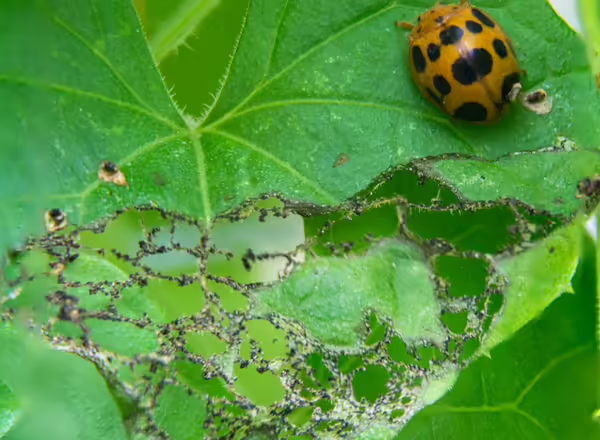
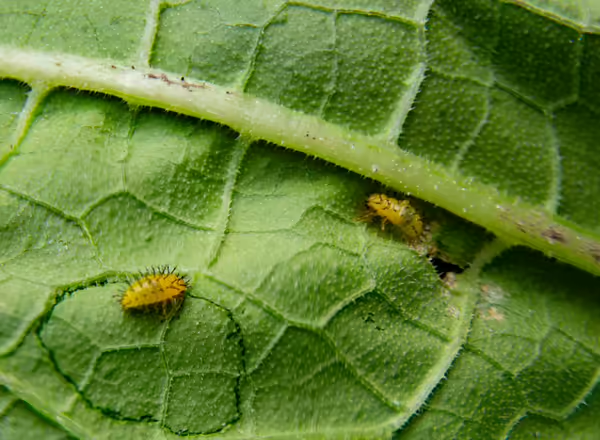
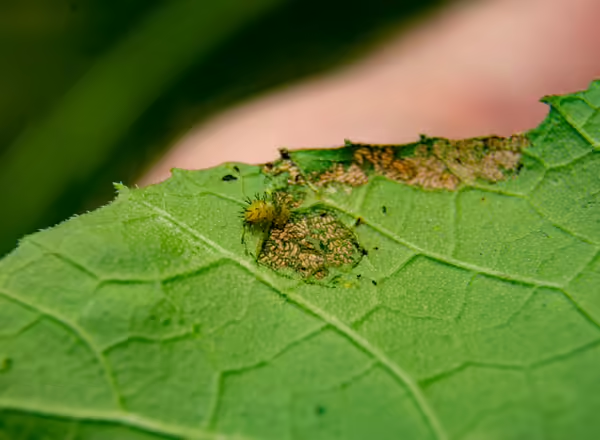
Managing Mexican bean and squash beetles
Fortunately, squash beetle populations rarely get high enough to cause enough damage to cucurbits where management would be needed. Adults will overwinter under tree bark and in plant debris near cucurbit plants, so cleaning up gardens may help reduce populations (it will also help with squash bugs).
Hand-picking the adults and larvae can be an effective way to manage populations in home gardens. If you’ve had squash beetles in the past, row covers can also be used to keep them off plants (also helpful for squash bugs), but they will need to be removed when plants begin to bloom. Pesticides can be used if populations do get high enough (and they rarely do).
Unfortunately, Mexican bean beetles can reach levels where they can damage plants, particularly when they start feeding on pods. Beans will vary in their susceptibility to the beetles, with wax beans being more susceptible than other snap beans and lima beans being the most resistant. So, if you consistently have issues with Mexican bean beetles, consider growing less susceptible cultivars. ‘Regal’ and ‘Idaho Refugee’ snap beans and ‘Baby Fordhook’ and ‘Baby White’ lima beans are more resistant to feeding.
Planting beans early or later in the summer can help reduce the amount of damage caused by Mexican bean beetles. Altering the planting date helps avoid peak populations. However, there are drawbacks to changing the planting date. Beans planted early in cool soils may be slow to germinate and can result in weak plants, and later planted crops may be exposed to a frost and killed before harvest can be completed.
As with squash beetles, floating row covers can be used to protect plants; since beans can self-pollinate, the covers don’t have to come off until harvest. Beetles can also be hand-picked from plants, and insecticides can be used If populations get too high.
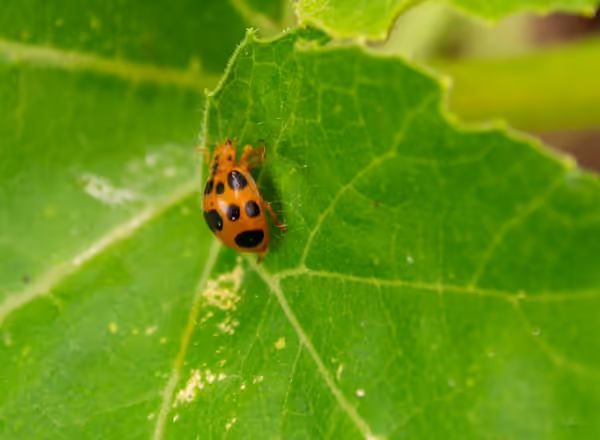
Good Growing Fact of the Week: Like other lady beetles, Mexican bean and squash beetles produce chemicals that make them distasteful to many predators. When disturbed, they will release an amber liquid from their legs that is bitter tasting.
Resources and for more information:
- Brannon, Loyd W. 1937. “Life-History Studies of the Squash Beetle in Alabama.” Annals of the Entomological Society of America 30 (1): 43–52.
- McIndoo, N. E. 1916. “The Reflex ‘Bleeding’ of the Coccinellid Beetle, Epilachna Borealis.” Annals of the Entomological Society of America 9 (2): 201–23.
- Nottingham, L. B., G. P. Dively, P. B. Schultz, D. A. Herbert, and T. P. Kuhar. 2016. “Natural History, Ecology, and Management of the Mexican Bean Beetle (Coleoptera: Coccinellidae) in the United States.” Journal of Integrated Pest Management 7 (1): 2.
- Nottingham, Louis B, and Thomas P Kuhar. 2019. “Evaluation of Mexican Bean Beetle (Coleoptera: Coccinellidae) Host Selection, Survival, and Feeding Injury among Snap Bean and Lima Bean Cultivars.” Journal of Economic Entomology 112 (2): 736–44.
- Tallamy, Douglas W. 1985. “Squash Beetle Feeding Behavior: An Adaptation against Induced Cucurbit Defenses.” Ecology 66 (5): 1574–79.
Signup for our emails! Want to get notified when new Good Growing posts are available? SIGN ME UP
MEET THE AUTHOR
Ken Johnson is a Horticulture Educator with University of Illinois Extension, serving Calhoun, Cass, Greene, Morgan, and Scott counties since 2013. Ken provides horticulture programming with an emphasis on fruit and vegetable production, pest management, and beneficial insects. Through his programming, he aims to increase backyard food production and foster a greater appreciation of insects.